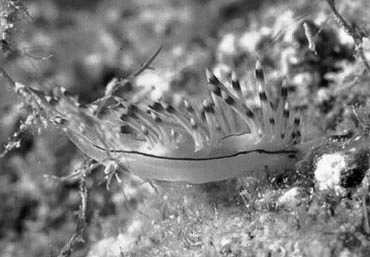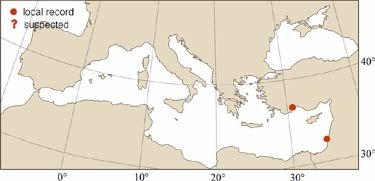
|
Relevant Synonyms
Misidentification
|
|
| photo: Haluk Akbatur |
|
SHORT
DESCRIPTION
color :
general body color translucent pinkish or pale purple, with three vermilion or crimson longitudinal lines from the head to the posterior limit of the tail, one of them mid-dorsal and a pair of lateral. Irregular white pigmentation may be present all over the body. Rhinophores, cerata, and angles of the foot translucent or opaque white basally and with purple pigment towards the tip.
common size :
up to 40 mm in length; specimen from Israel: 5 mm. |
DISTINGUISHING CHARACTERISTICS
BIOLOGY / ECOLOGY
habitat :
the specimen from Ashqelon was found on rocky bottoms, at 12 m depth. |
|
1st
Mediterranean record
|

|
|
DISTRIBUTION
|
ESTABLISHMENT SUCCESS
speculated reasons for success :
|
|
|
MODE OF
INTRODUCTION |
IMPORTANCE TO
HUMANS |
|
KEY
REFERENCES
|
|
|
 Coryphellina rubrolineata (O'Donoghue, 1929)
Coryphellina rubrolineata (O'Donoghue, 1929)